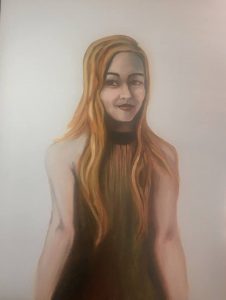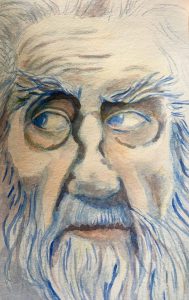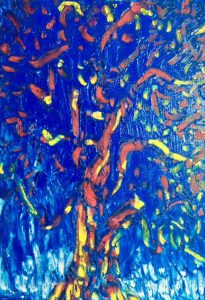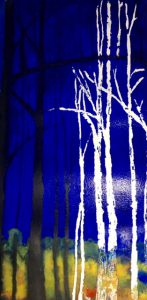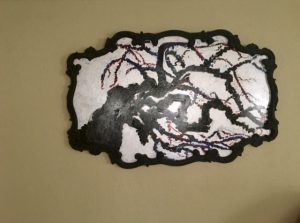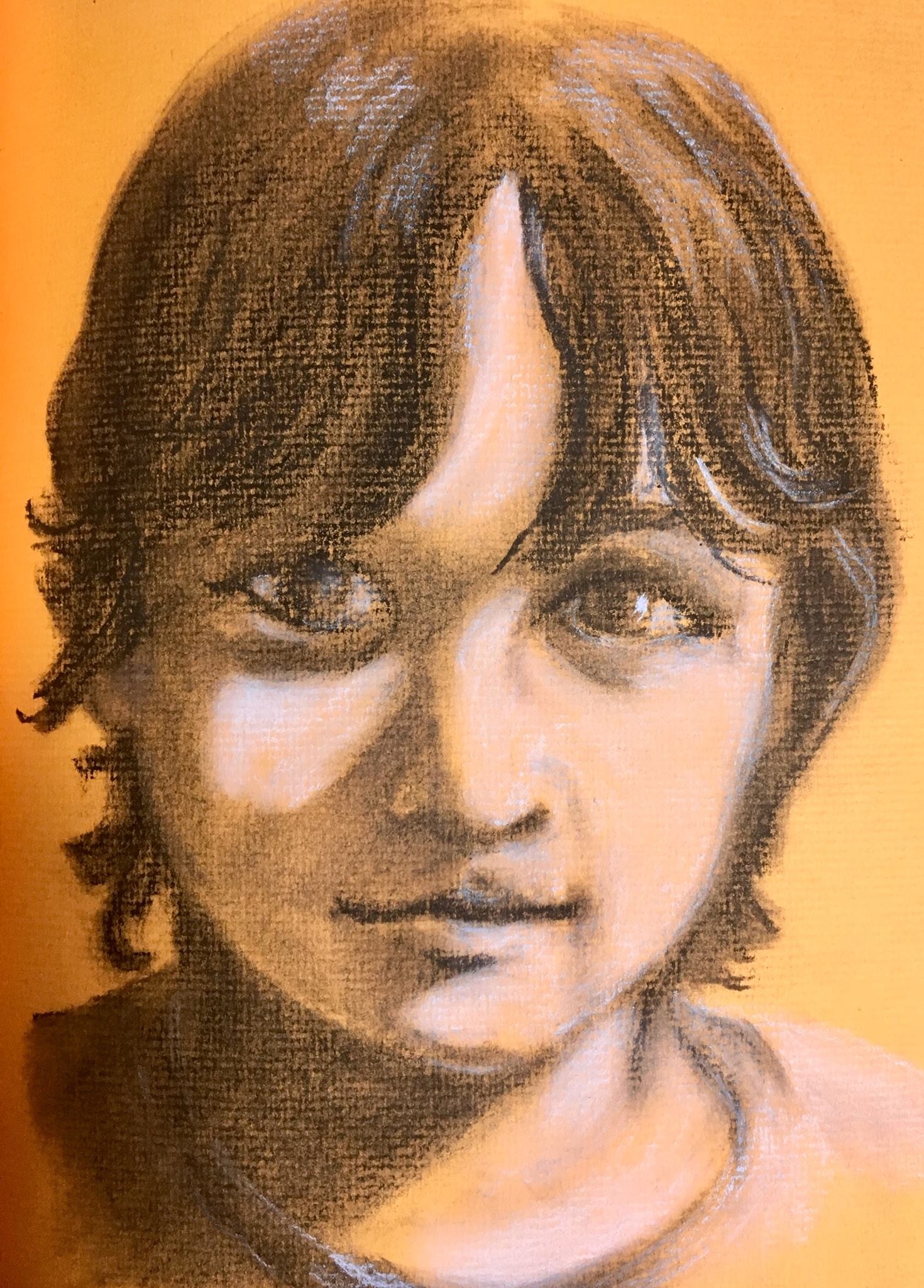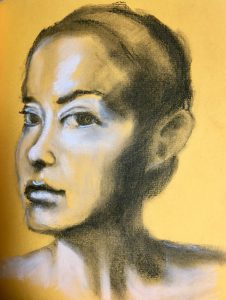 The truth is I needed this project more than it needed me. I needed to find my voice in art and to use my reporting and artistic skills to promote a better society. When Suzannah, my partner in the “Voices” show, asked me for ideas for a November show, I knew we should do art that focuses on immigrants and immigration issues.
The truth is I needed this project more than it needed me. I needed to find my voice in art and to use my reporting and artistic skills to promote a better society. When Suzannah, my partner in the “Voices” show, asked me for ideas for a November show, I knew we should do art that focuses on immigrants and immigration issues.
Daily, I hear vitriol thrown against people who are more like “us” than not. Why? Because we, as people, are afraid of change. I wanted fight that fear and build empathy and mutual understanding. The only way I know how to do that is to let people speak for themselves and to paint portraits that delve into their individual personalities.
Therefore, my part of “Voices” focuses on the individual.
For example, I built a collage with Panama, Mexico and U.S. maps as a background for Michael, a young man in Rogers who dreams of being a pilot. For Adita’s portrait, I used a stamp from India to showcase where she comes from. For Sabine, I used a photo printmaking process from the 1800s and painted her portrait over those images. Sabine is a photographer who has received much recognition for her art.
The power of a portrait is that we see ourselves reflected in the expression and soul of the sitter. We see pieces of ourselves, our humanity and our sameness in portraits. We also gain empathy for and with each other by listening to each other’s stories.
In “Voices,” I concentrate on the faces and voices of people who moved from their home countries to live in Arkansas. I recorded each person telling what he or she would want people to know. The words are their own, unedited, uncut and uncoerced. Voices, like fingerprints, like each story, like each person, are unique.
I used mixed media techniques — everything from soft pastel to bichromate photography — to create portraits that heighten the sense of diversity and individuality among people generically labeled “immigrants.”
 Issues surrounding immigration are not restricted to one race or ethnicity. It is important to note the diversity within these issues. I hope, by concentrating on individuals, my work brings about a greater understanding that will translate to changes of heart, mind and law.
Issues surrounding immigration are not restricted to one race or ethnicity. It is important to note the diversity within these issues. I hope, by concentrating on individuals, my work brings about a greater understanding that will translate to changes of heart, mind and law.
All of these portraits are mixed media. I chose to use spray paint on most paintings to achieve a more urban street art feel. I’m interested in creating evocative and thoughtful art that transcends traditional media parameters. Street art has similar aspirations.
This project is unfinished. I hope to continue to collect stories and portraits and exhibit this show elsewhere.
Updates: A day after the show opened Nov. 1, Martha Lopez passed her test and became a U.S. Citizen. Raj, who helped develop Northwest Arkansas comedy entertainment, has since moved out of Arkansas.
Listen to some of the recordings below:
Adita Karkera, Inda
Joelle Storet, Brussels
Raj Suresh, India
Josline Ennen, Uganda
Martha Lopez, Mexico
Michael De Hoyos, Mexico & Panama
Sabine Schmidt, Germany








